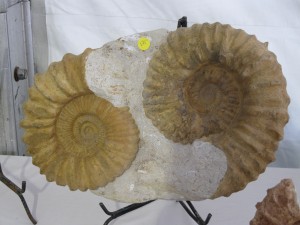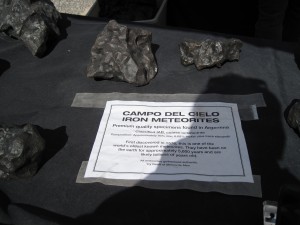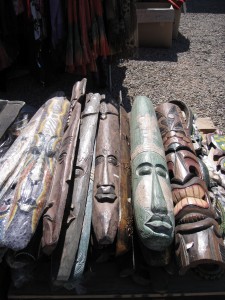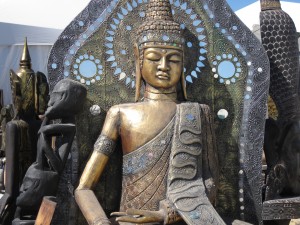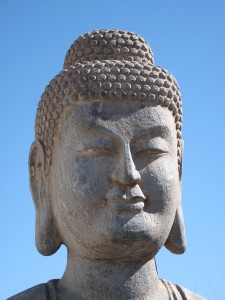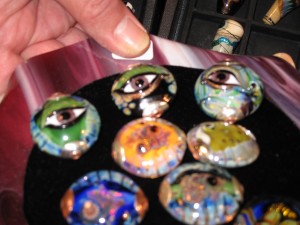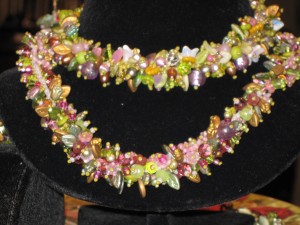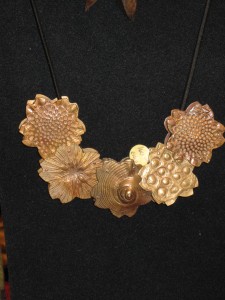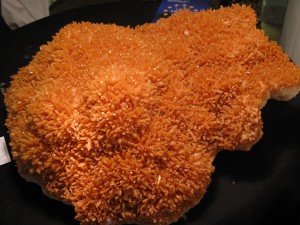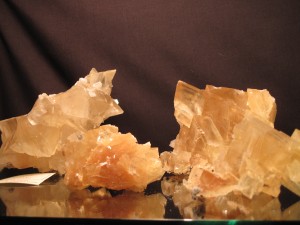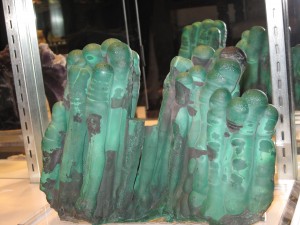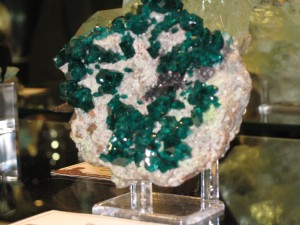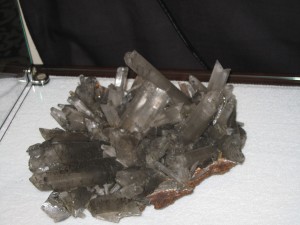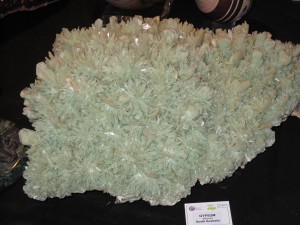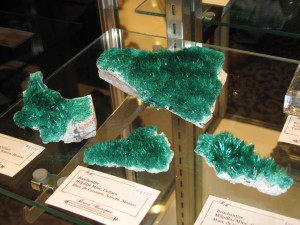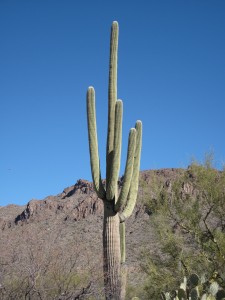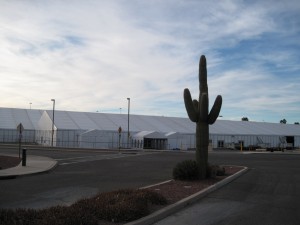Archive for the ‘Things to See and Do Around Tucson’ Category
Tucson Gem and Mineral Show…Education too is a big part
Wednesday, February 9th, 2011The Tucson Gem and Mineral Show is not only a feast for the eyes, it is also a smorgasbord for attendees with the variety and abundance of classes offered during the two week period. The theme of this year’s show at the Tucson Convention Center is “Minerals of California” .
Experts will speak about California minerals and these lectures are for the true professional mineralogists and gemologists. This show begins Thursday, February 10 and runs through February 13. Doors open at 10 am. It is at this show that specimens from private collections and museums are exhibited, including minerals from the National Park Services, the Mineralogical Association of Canada, Flandreau Science Center from the University of Arizona in addition to hundreds of worldwide exhibitors.
American Gem Trade Associations hold their annual meetings at the Gem and Mineral Show and there are numerous by invitation only cocktail parties and dinners. This is a place where business is transacted for many of the associations.
The huge show book details classes available, when and where at each of the shows. Most of the classes carry a fee, but generally that is for the price of the kit being used.
Beginner instruction as well as ultra advanced instruction is available. The topics are diverse from beginner stringing for beads to “Off loom weaving and circular peyote stitch, intermediate level” for a crystal beads and buttons bracelet.
Technical sessions such such as forensic gemology and how to identify gemstones using gemological tools you can carry in your pocket are well attended.
Classes for gem and lapidary enthusiasts are available throughout the show. Lampwork Beads and Donuts, Macrame, Flameworking, as well as classes in cabochon pendants, and wire crochet necklaces are available for the novice and expert alike. All day workshops on beading which cover a myriad of methods are a favorite.
I think it would be grand to take three or four days and a bucket load of money and not be concerned about working or money; then take a week’s worth of classes starting from the baby beginner class in some aspect of jewelry making, practicing throughout the week until I could create a piece of jewelry which is more than passable. I would then take another bucket load of money and run unbridled throughout the shows, pondering the selections, picking and choosing my colors, facets, and designs for my grand masterpiece which would culminates the week’s “education”.
Resources:
http://www.tgms.org/2011show.htm
72 Degrees Today…Wander the Gem and Mineral Show and Enjoy!
Tuesday, February 8th, 2011The sun is glinting off of the huge mesquite and eucalyptus trees providing little lacy patterns against the azure sky. It’s a perfect day for combing the Gem and Mineral Show, temps about 72 degrees, warm enough to wander about without a cumbersome jacket, and comfortable enough to want to stay for hours.
The frontage road which parallels I-10 is awash in all types of vendors from throughout the world. They arrive with huge trunks and crates of goods and spend days setting up their displays. After all, this is the largest Gem and Mineral Show in the world, emulated by many.
It’s history is fascinating, a dream of a small group of mineral and rock enthusiasts. They got together for an exhibition which was free to the public, and the rest is history!
Arizona is a state famous for its minerals, most particularly, copper. But the mountains of the Grand Canyon State have yielded silver and gold, and turquoise-the minerals most often depicted in the Old Wild West movies because of their assumed value. Those of us from Arizona know of the Bisbee mines and the Morenci mines because of the employment they provide for miners, and we hear of other mines because of the controversy environmentally by groups which oppose them.
But the lands of Tucson have yielded blue azurite from Ajo, a blue copper mineral which fades in the sunlight, and related to the verdent malachite. The red-yellow-orange colors Wulfenite from the Red Cloud Mine in La Paz County are a favorite of collectors because of the deep red color. Turquoise from Kingman has the greatest value and the Sleeping Beauty Mine in Globe is one of the world’s most important producers of turquoise. Stunning quartz from New River and from Pima County, Vanadinite, with red hexagonal crystals is considered a secondary mineral. Used in jewelry and industry, these minerals not onlyt radiate their own beauty, but have found usefulness in products we use daily.
This is an opportunity to see the minerals “up close and personal”. The variety, colors, and shapes are astounding. There are minerals from all over the world, enjoy Tucson weather, wander and marvel!
Resources:
University of Arizona Mineral Museum
http://www.uamineralmuseum.org/
History of the Gem and Mineral Show Tucson Convention and Visitors Bureau
http://www.visittucson.org/visitor/events/gemshow/history/
Tucson Gem and Mineral Show
http://www.tgms.org/2011show.htm
Minerals of the Sonora Desert Sonora Desert Museum
A Million Beads to Choose From…Tucson Gem and Mineral Show
Sunday, February 6th, 2011Professional beaders from around the world flock to The Gem and Mineral Show in Tucson every year. An array of strands in assorted colors and sizes line the tables where people scrutinize the pieces, matching one color with another, or combine separate beads to determine whether they are aesthetically pleasing side by side.
The artists see in their mind’s eye what they will create. Talk is sometimes animated, at other times, silent…the silence of quiet deliberation.
The translucency of the faceted beads or the opaqueness of the cabochons is given undivided attention, as well as the weight and the type of bead.
Seed beads are numerous and intricate pieces of jewelry or accessories are displayed illustrating the patience and hours necessary to complete the beadweaving.
Beads comes in all materials; ceramic and pottery beads, crystal and glass beads, plastic and metal beads, beads of organic plant materials, beads of metal or stone, and most famously, pearls. Of course, beads at one time were used in many civilizations as a currency.
Handmade lampwork beads are unique and there are never two of the same. Jeff Barber, the artist who created the lampwork beads shown below, explains that the glass is melted on a rod with an oxygen propane torch, and wound onto a stainless steel mandrel. “The bead is created from the inside out” and then placed in the kiln. Barber specializes in glass art beads.
The metal beads are illustrated in the metal necklace below. Most fascinating was the Buddah with the German vintage glass beads which formed a crown about his head. Delicate replicas of fruit were threaded together to form this intricate headpiece and the colors were vibrant.
Fastings and findings as well as beginner beaders kits are also available. All types of clasps in all price ranges are sold. The Beaders shows are located at Windmill Inn, St. Philip’s Plaza, the Doubletree Hotel at Reid Park, and at Kino Veterans Memorial Community Center.
Beads can be found in many of the other shows which are not exclusively devoted to beaders.
Pick up the Tucson EZ-Guide, the small version of the Tucson Show Guide, which is nearly one inch thick , check the free shuttles from show to show, and enjoy!
Click on each photo to see an enlargement.
Resources:
http://www.lakesideartglass.com
http://www.GailCrosmanMoore.com
http://www.etsy.com/shop/alohabead
http://www.lakesideartglass.com
http://www.bestbeadshow.com/BestBeadShows/BestBeadShow.aspx?id=1
Gem and Mineral Show Is A Can’t Miss Event!
Saturday, February 5th, 2011Unbelievable colors, pales and pastels to vivid amber yellows, deep turquoise, grayish spring greens, coral roses, beeswax, and more are on view for all to see at the Tucson Gem and Mineral Show. It is as if the entire Pantone color chart is represented with nature’s hand in charge of the painting.
Students of geometry will be spellbound by the crystalline structures, far more than high school geometry takes us.
Tetragonal, orthorhombic, triclinic structures are on display with a multitude of other shapes and sizes. The sheer beauty of these minerals is breathtaking.
As I grow older, I understand why I should have paid attention to the geology sections of science, or geometry theorems. Strange names identify the minerals, and I was stunned to find Gypsum in so many beautiful colors.
A novice, such as I, tends to think all Topaz is yellow, but au contraire…there is purple, there is red…as well as the spectrum of yellows and deep amber.
The connoisseurs of the minerals at Westward Look are experts; they know their minerals, where they come from, where else in the world the minerals are found, the grade of the mineral and they talk with authority to each other and buyers from throughout the world.
The event I attended at The Westward Look, off of Ina Road, featured six pods, each with six rooms of stunning minerals in all colors, shapes and sizes.
This one small show is being replicated throughout the city with 43 shows all over Tucson. People come from all over the world to buy, sell, and trade gems and minerals. Most shows end February 7. There is free shuttle between the shows. The Tucson Gem and Mineral Show is the largest show of its kind in the world.
To see the crystalline structures of these minerals better, click on the photo.
Resources:
Crystal Structures
http://www.windows2universe.org/earth/geology/crystal_shapes2.html
Tucson Gem and Mineral Show, Tucson Convention and Visitors Bureau
http://www.visittucson.org/visitor/events/gemshow/
Dealers at Westward Look – click on website to see array of beautiful minerals
http://www.mineralmasterpiece.com/
Tucson’s Stately Saguaros Welcome You…
Thursday, January 20th, 2011Standing stately in Saguaro National Momument West and East are thousands of tall heavy Saguaro cacti with their arms reaching out or towards the sky. They are often pictured on postcards with captions like, “Welcome to Arizona” and the creamy white flowers which become a fruit are the state flower of Arizona. The Saguaro blooms in May and June and the fruits become the basis of wine and jellies.
The Arizona Sonora Desert Museum sponsors fruit gathering outings where visitors learn how to harvest the fruit with the long and unweildy Cactus puller. Fruit is usually harvested in the morning when it is cooler and the intensity of the desert sun is not as hot, beating down upon the workers. The fruit can be eaten raw and is an excellent source of nutrition as are many of the cacti found in the Sonora Desert.
Birds feast on the fruit and cactus wren, the state bird of Arizona which often nests in the Saguaro, derive much of their water source from these oblong reddish green “balls”.
The Saguaro is an amazing plant, weighing tons especially after monsoon season. They are protected and removing them from their “home” without proper permitting , and especially the desert is a crime.
It takes approximately 75 years for a saguaro to grow it’s first arm. Plants like that shown are 100 years old or more. The seeds fall or are carried by birds and bats which are abundant in the desert, and those seeds which are protected by other vegetation such as mesquite and palo verde trees are the most likely to grow and mature. This is why one often sees a young saguaro near a willowly palo verde or lacy mesquite.
Holes and “scars” are numerous especially in an older saguaro. These are the homes of numerous birds, bats, owls, and insects; the holes have been carved by these inhabitants to become a place to live raise their young.
It takes at least five years for a saguaro to die and the ribs of dead saguaros are used for building and for trim on furniture. One might see part of a native home made of saguaro ribs or used as a building material, no part of the cactus is wasted. The decaying cacti are a source of food and lodging for many beetles and insects which roam the desert. Examination of a decaying saguaro structure reveals an abundance of life which can only be seen close up.
The unique beauty of Saguaro National Monument is attributed in part to the regal Saguaros which dot the landscape.
Resources:
http://www.nps.gov/sagu/planyourvisit/75th-anniversary.htm
http://www.saguaro.national-park.com/info.htm
Giving Back to the Community…CRS and Hearth
Wednesday, January 19th, 2011The 23th annual Founder’s Day Luncheon, celebrated by the Arizona Certified Residential Specialists (CRS) and the Hearth Foundation, is a commemorative event open to the community at large.
Founder’s Day celebrates the founding of The Hearth Foundation by members of CRS and the Tucson Board of Realtors®. Articles of incorporation were filed with the State of Arizona November 12, 1987 with the mission of establishing housing for homeless women 18 years of age or older with children 12 years or younger.
Since that time, Hearth has broadened its scope to include homeless women caring for children and has embraced the community at large, not just Realtors®. Hearth supplies transitional housing as well as emergency short term housing for homeless women with children and derives its funds from fundraisers sponsored by the organization as well as donations from the public and other civic organizations. Programs are provided by Our Family Services and New Beginnings.
CRS is an organization of Realtors® under the auspices of the National Association of Realtors®. Only four per cent of Realtors® hold their CRS designation, earned from both extensive continuing education as well as production, yet CRS agents account for 25% of the transactions nationwide. CRS agents are known for their skills and knowledge which serves clients well.
In the past, the Arizona Chapter of CRS has been named national Chapter with the Heart for its support of Hearth.
Reservations for the luncheon, which begins promptly at 11:30 am, can be made at the link below. The cost is $25 per plate. Westward Look, a renowned Tucson resort off of Ina Road just east of Oracle, is the venue and valet parking is available. Menu choices are available at the registration site and include: Herb-Roasted Breast of Chicken with Prickly Pear Glaze, Garlic Mashed Potatoes and the Chef’s selection of Fresh Seasonal Sauteed Vegegtables or a Vegetarian Ravoli. The luncheon will end promptly by 1:15 pm so attendees can get to the TAR Summit by 2 pm. Make your reservation at:
http://thehearthfoundation.com
http://arizonacrs.com
Preparations underway for the Gem and Mineral Show…
Monday, January 17th, 2011The big white tents are beginning to dot the city; from Palo Verde on the south side of town, up through the Frontage Road along I-10, to the center of town across from the Tucson Convention Center. Preparations are underway for the Gem Mineral and Fossil Showcase. The show, which takes over the city, brings vendors and buyers from all over the world. Tucson truly becomes a melting pot. Language students are in their glory!
This year’s theme is Minerals from California. The main show at the Convention Center will feature colorful multi faceted minerals and gems from the state speculators flocked to during the gold rush. Incidentally, Tucson was made a part of the Gadsden Purchase because it was the best route to California for those with gold rush fever.
Begun originally as a local show in 1955, the Tucson Gem and Mineral Show has grown to become the largest show in the world which other shows wish to emulate. The Showcase has grown up around it. Many of the “shows” allow only professional buyers with tax identification numbers. Buyers from throughout the world are here to buy and sell precious stones and minerals which will become part of investor collections, part of a precious piece of jewelry, or a museum item. Millions of dollars change hands.
Hotel rooms become the bartering place including the very upscale resort hotels here in Tucson.
But the fun shows welcome the general public and the flavors represent all parts of the world. If you spent the entire time the show is up and running, you could not see everything. African art, beads from throughout the world, fossilized plates, huge piece of crystal, delicate rings with gemstones, diamond earrings, rugs, crystals, meteorites… on and on. It’s an education unto itself!
Grab a comfortable pair of shoes and get ready. The Showcase opens January 28 and will run through the second week of February. The Gem Mineral and Fossil Show at the Convention Center opens February 1o through the 13th. This show will dazzle, but the fun is at the many and varied Showcases in the big white tents. And there is “show food” too, but don’t forget your bottle of water, this is after all, Tucson!
road from
http://www.visittucson.org/visitor/events/gemshow/
http://www.visittucson.org/visitor/events/gemshow/faq/
http://www.tgms.org/showinfo.htm
Tucson…Starry Starry Night…Kitt Peak Observatory
Thursday, January 6th, 2011There is magic in the air in Tucson, the air is crisp and clean, oh yes, we have measures of particulate matter, but not as much as Phoenix, which bode well for air quality.
We are home to several observatories which need clean air in order to see the galaxies millions of miles in the distance. Clear skies are a requisite to building an observatory. And Kitt Peak, located about an hour west of Tucson, is preeminent amongst observatories, hosting the observatories and telescopes of several nationally recognized colleges as well as NOAO.
“Kitt Peak National Observatory (KPNO), part of the National Optical Astronomy Observatory (NOAO), supports the most diverse collection of astronomical observatories on Earth for nighttime optical and infrared astronomy and daytime study of the Sun. Sharing the mountaintop site with the National Solar Observatory, KPNO, founded in 1958, operates three major nighttime telescopes and hosts the facilities of consortia which operate 19 optical telescopes and two radio telescopes. (See the Tenant Observatories list.) Kitt Peak is located 56 miles southwest of Tucson, AZ, in the Schuk Toak District on the Tohono O’odham Nation and has a Visitor Center open daily to the public”
I had an “amateur” astronomy client once tell me, he only wanted to purchase land west of I-10 and I-19 because Tucson had prevailing westerly winds. The particulate matter from the cars traveling the highways blew eastward and that he could see the heavens better from the west side of town because there is less highway pollution.
Kitt Peak is located west of Tucson on Route 86, also known as Ajo Highway, which is the road to Why, a much traveled road leading eventually to Rocky Point. Farms and fields dot the landscape and when I was there last, I thought “this looks like Connecticut”. A white farmhouse was set back from the road and the fields with raffia like pumpkin vines held deep orange pumpkins, gone unpicked by pumpkin hunters.
A country store, a gas station, and a few buildings mark Three Points, otherwise known as Robles Junction. This is where the road to Sasabe, Highway 286, forks and wends its way to Sonora, Mexico. The Baboquiari and Quinlan Mountains loom in the distance and the telescopes of Kitt Peak beckon. We enter Tohono O’Odham land where the site of Kitt Peak is considered a sacred mountain.
The winding uphill road to Kitt Peak offers beautiful views of the surrounding areas, Tucson to the northeast, the Tumacacori Mountains and the San Luis Mountains around Arivaca to the south southeast, the Altar Valley and Mexico to the south, and the Santa Rosa Valley to the northwest.
Suddenly the telescopes appear, looming big, larger than life, and we have completed the ascent. It is chilly. We are more than a mile above sea level at 6875 feet. People attending the evening sessions are warned to bring a warm jacket, mittens or gloves and to wear a hat. We are ready to embark upon an out of this world experience and learn about the galaxies, some of which is difficult to fathom. The Kitt Peak program is an education and brought to you by some of the most knowledgable astronomers in the nation, a “not to be missed” experience!
Resources:
http://www.noao.edu/outreach/kpoutreach.html
http://cleardarksky.com/c/KittAZkey.html
http://airnow.gov/index.cfm?action=airnow.local_state&stateid
Tucson International Airport, A Gem of an Airport!
Wednesday, January 5th, 2011Tucson is a warm weather destination for thousands of people who want to exchange snow, sleet, ice, and freezing weather for warmer temperatures, sunshine, and the exercise of a round of golf rather than shoveling snow.
With an efficient international airport, Tucson is easy to reach. Many airlines have direct flights from their hubs, and the airport is within 20 minutes of Tucson proper. There are also daily flights to points in Mexico.
The Tucson International Airport website (listed below) features daily deals for airlines, a terminal map, information about ground parking, transportation options, a list of arrivals and a list of departures with their “on time” status, as well as information about the artwork which greets visitors as they wander through the airport.
Tucson International is an easy airport to navigate and when walking out the main doors, the warmth of Tucson greets visitors framed by the majestic mountains which surround the city.
It’s easy to get to either I-10 which goes to the center of town, or to I-19 which one takes to get to Sahuarita and Green Valley.
There are plenty of rental car places, both on site at the airport, or off site. Like most airports, those off site may charge a bit less. But if you want the best deal, rent a car from a place in the city so you don’t have to pay the airport surcharge which most cities charge…and use the coupon which you get either on line or from The Entertainment Book!
People often think flying into Phoenix is cheaper, but I’ve tried that when flying to the east coast. I took the shuttle to Phoenix which is now $37 one way if booked a day in advance with a 25% discount for the second or third passenger, but still that adds $74 to the price of a ticket for one person round trip. The ride was more than two hours, as opposed to 20 minutes to the Tucson Airport, and I groggily boarded the shuttle at 4:30 am for a 8:30 am flight.
Checking prices this morning for Southwest; from Phoenix to Chicago is $109 on a “Wanna Get Away” airfare, and only $10 more from Tucson, at $119. The “Anytime” flight is $403 from Phoenix and $437 from Tucson; and the “Business Select” is $423 from Phoenix, one way, and $457 from Tucson, still less than a one way shuttle price.
Sky Harbor Airport parking is $7.00 a day if you leave your car there. Tucson International parking is $4.00 a day if one parks at Park’N Go, and the shuttle buses come every five to seven minutes. Drivers are polite and always willing to help with luggage.
It is a given there are more direct flights from point to point at Phoenix’s Sky Harbor, but it is worth considering that flying into Tucson may be worth a half hour layover in Denver or Dallas.
If it is a two hour drive to Sky Harbor one way and you don’t want to bog down in Phoenix traffic, then think about flying into Tucson International. You’ll begin your vacation much more relaxed!
Resources:
Tucson International Airport
